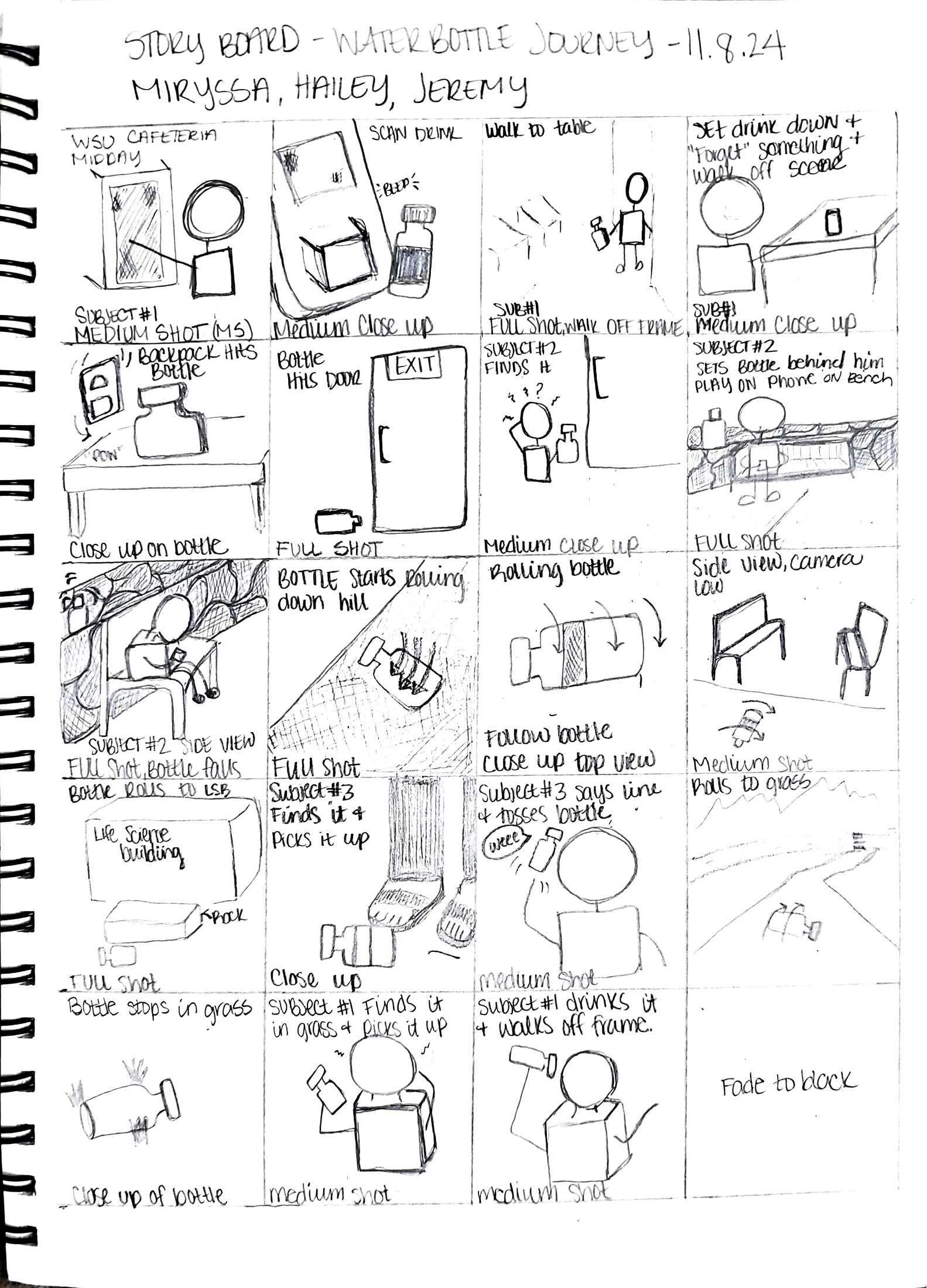Hello class!
I’m a little late on this post, considering the footage for the rough cuts is due this Friday, but I do think the one-minute short that my group and I have constructed is gonna be enjoyable!
My group consisted of myself, Miryssa Casas, and Hailey Betts. Together we constructed a comedy sketch about a student losing a water bottle or purchased drink of some variety, but the bottle eventually finds its way back to said student through extreme luck.
The story goes that the main student purchases a drink and then sets it down to go get something else. It then gets knocked away by another student, then begins travelling far enough away that the initial student can’t find it, giving up and heading home. The bottle makes a really long journey all the way down to the parking lot where the first student is parked, meaning they find the bottle, confused as to how it got there.
The beauty of a sketch like this is that we’re able to film on site at campus, where it’s most likely the most convenient for everyone. And it has a cafeteria where we can catch footage of the actual purchasing of the drink.
The campus is also a good location thanks to a key factor for the filming: gravity! We can use the bottle on the various hills around campus to simulate it rolling away and throughout it’s various stunts and tactics. We can also easily ask favors from any students who may be nearby while we work on filming in order to get some extra people if necessary.
-Jeremy Sauter
